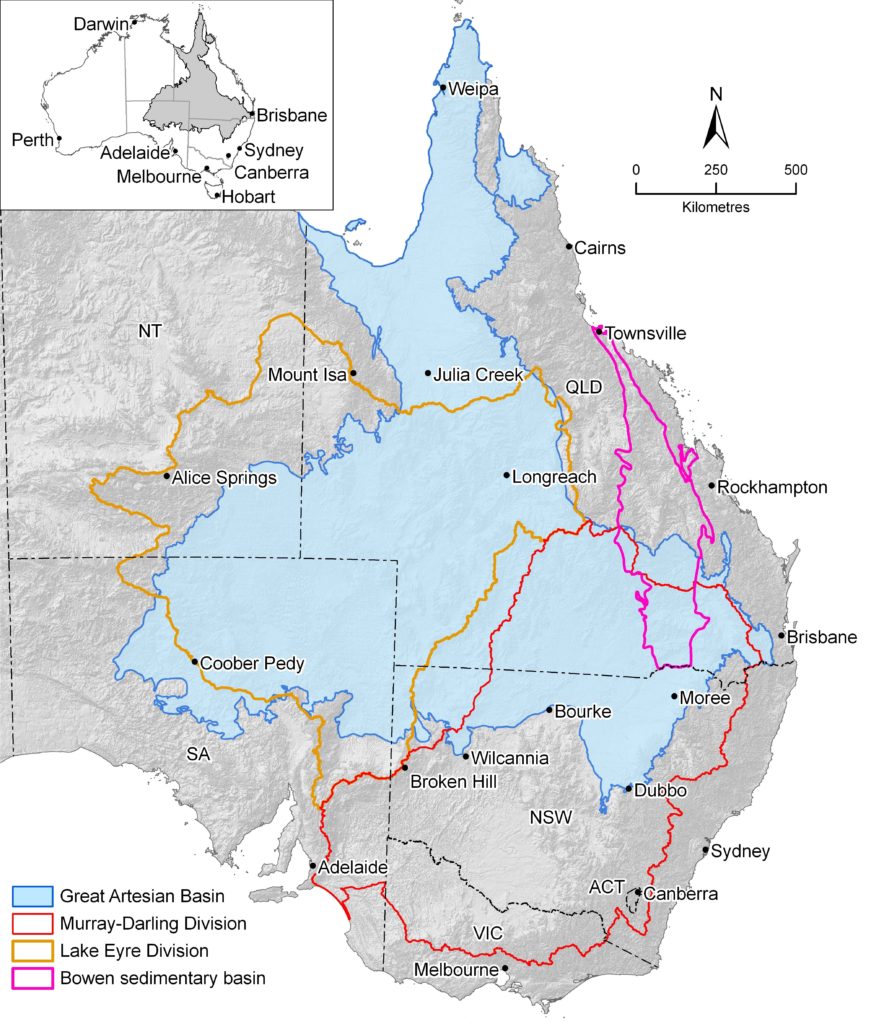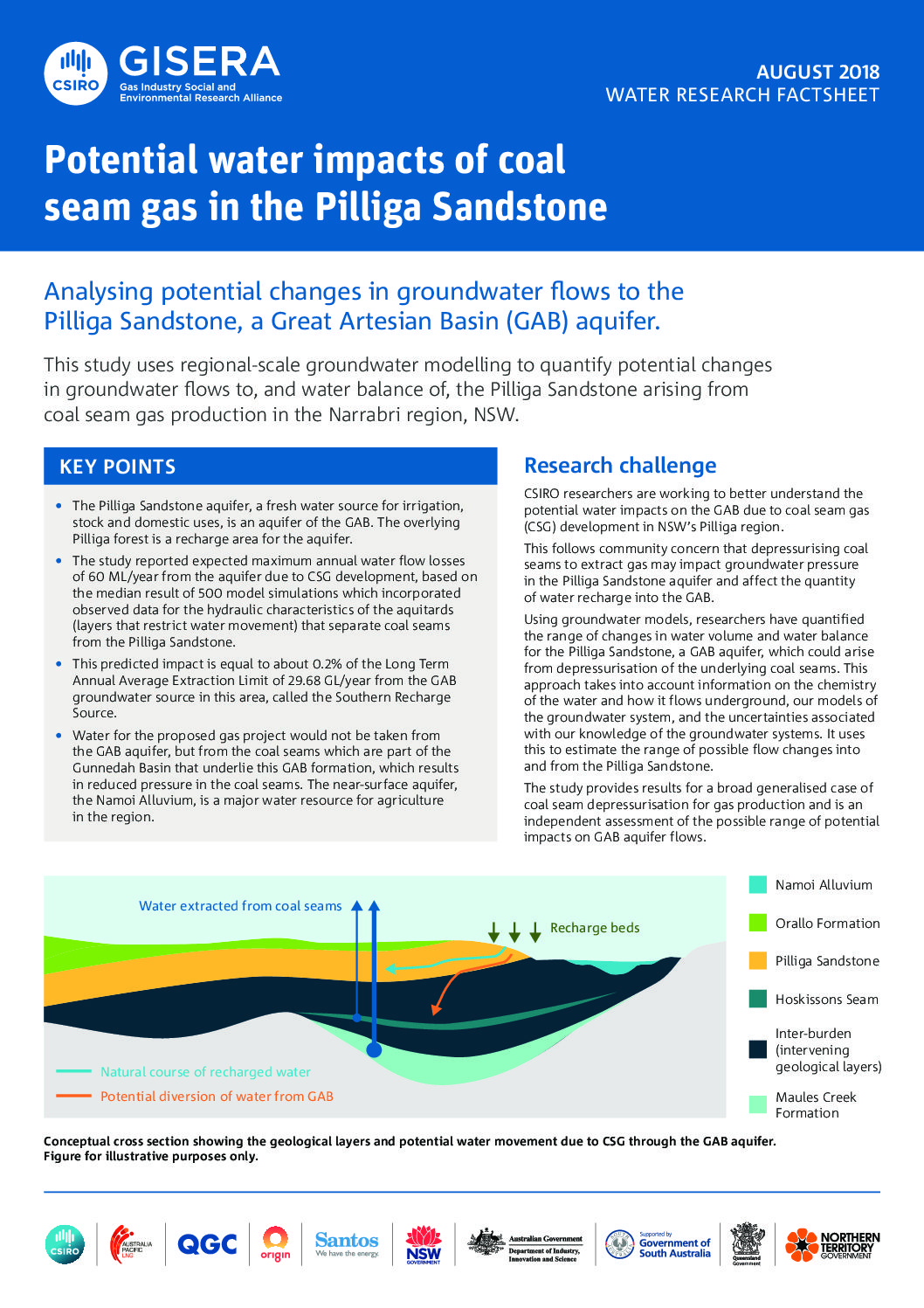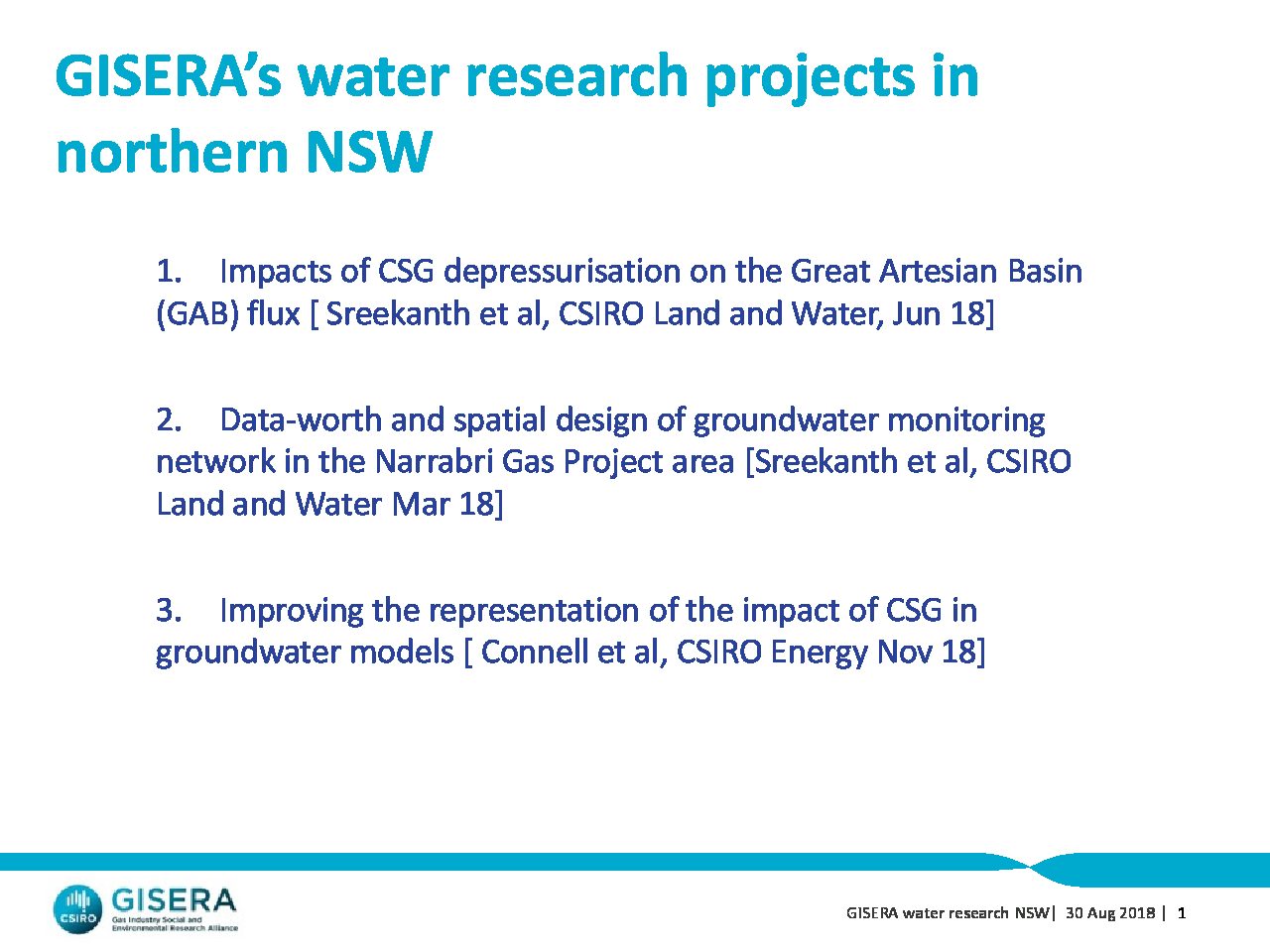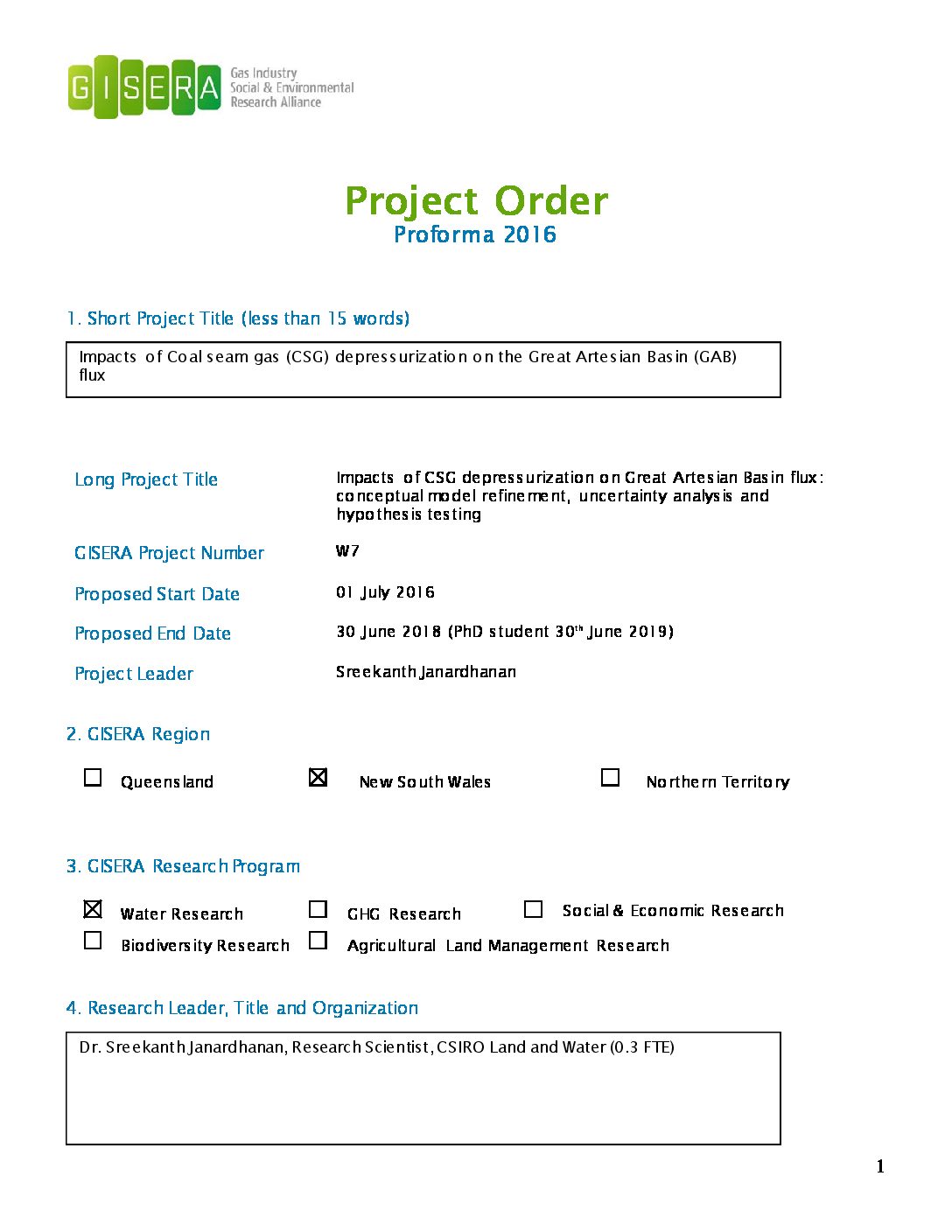Impacts of CSG depressurisation on the Great Artesian Basin flux
This research aims to improve the understanding of the GAB groundwater flow in the Pilliga region through integration of existing information from models, hydrochemical data and environmental tracers.
The outcome of this project is an assessment of potential changes in GAB groundwater flux (flow volumes) as a result of CSG development using state of the art uncertainty analysis and modelling.

Reports and papers
Hydrogeological and ecohydrological connections in the CSG development areas of the Namoi region
This report helps to improve understanding of groundwater dependent ecosystems such as springs, waterways and remnant rainforest in the Namoi region in relation to potential CSG development.
Probabilistic modelling and uncertainty analysis of flux and water balance changes in a regional aquifer system due to coal seam gas development
Highlights:
- Probabilistic modelling of impact of onshore gas (coal seam gas) development on water resources.
- Predictive uncertainty analysis of impacts to groundwater flux and water balance.
- Numerical modelling of groundwater interactions in complex sedimentary basins.
- Predictive modelling of impacts accounting for prediction uncertainties.
Uncertainty analysis of CSG- induced GAB flux and water balance changes in the Narrabri Gas Project area – Final report
Uncertainty analysis of CSG-induced GAB flux and water balance changes in the Narrabri Gas Project area – Final report quantifies potential groundwater flux and water balance changes in the Great Artesian Basin (GAB) aquifer (Pilliga Sandstone) under CSG development scenarios in the Gunnedah Basin, NSW.
It provides an independent probabilistic estimation of potential regional scale coal seam gas (CSG)-induced impacts on the groundwater resource in this GAB aquifer arising from generic depressurisation of Gunnedah Basin coal seams.

Uncertainty analysis of CSG induced GAB flux and water balance changes in the Narrabri Gas Project area
This report, Uncertainty analysis of CSG-induced GAB flux and water balance changes in the Narrabri Gas Project area, quantifies potential groundwater flux and water balance changes in the Great Artesian Basin (GAB) aquifer (Pilliga Sandstone) under CSG development scenarios in the Gunnedah Basin, NSW. It provides an independent probabilistic estimation of potential regional scale coal seam gas (CSG)-induced impacts on the groundwater resource in this GAB aquifer arising from generic depressurisation of Gunnedah Basin coal seams.
- The interim report demonstrates that CSG development will result in some changes to the groundwater flow and water balance of the Pilliga Sandstone aquifer in this recharge area of the GAB.
- Based on 500 simulations constrained with observations, preliminary results of the groundwater modelling showed an expected maximum water loss from this GAB aquifer due to CSG development of around 85 megalitres per year, equivalent to about 0.3% of the Long Term Annual Average Extraction Limit from this aquifer.
- Water for CSG development is not taken from the GAB aquifer, but from the coal seams which are part of the Gunnedah Basin that underlie this GAB formation resulting in a reduction in pressure in the coal seams.
- The expected value of induced change in flow from the near-surface aquifer, called the Namoi Alluvium, into the Pilliga Sandstone was estimated at 0.89 megalitres a year or nearly 0.001 % of the average annual extractions from the alluvium. The groundwater of the Namoi Alluvium is a major agricultural resource for the region.
- This modelling study has provided an independent estimate of the range in potential maximum impacts on water volumes of the Pilliga Sandstone GAB aquifer under a broad range of scenarios.
Ongoing studies should improve the understanding of recharge and aquifer connectivity and refine the model predictions of water impacts to water resources in the Namoi region.
Hydrochemistry of the Pilliga Sandstone aquifer in NSW – data availability, preliminary assessment of spatial patterns and conceptual model uncertainties
This research aims to improve understanding of regional hydrogeological groundwater dynamics in the Narrabri region of NSW,including recharge processes, aquifer interactions and the role of geological structures. Existing hydrochemical and environmental tracer data were compiled and used to assess regional scale recharge processes and hydrochemical evolution along groundwater flow paths from the recharge area of the Pilliga Sandstone aquifer to the deeper parts of the Surat Basin.
Constraining groundwater recharge in the Pilliga Sandstone (Surat Basin, NSW) through environmental tracer data
This project generated new tracer information from a field campaign which focused on sample collection from the Pilliga Sandstone in the recharge area between Gilgandra and Narrabri and further along the flow path within the Pilliga Sandstone towards the West. In this study, groundwater velocity and flow direction in the Pilliga Sandstone aquifer were evaluated using environmental tracers, as a basis for deriving recharge as an essential component for the water balance estimation.
Extras

Potential water impacts of coal seam gas in the Pilliga Sandstone
This factsheet highlights outcomes of a regional-scale groundwater modelling project which quantifies potential changes in groundwater flows to, and water balance of, the Pilliga Sandstone arising from coal seam gas production in the Narrabri region of New South Wales.

Impacts of CSG depressurization on Great Artesian Basin flux
The outcomes of the project were presented at a knowledge transfer session held in August 2018.
Project Progress
This project is complete.

Project proposal
A detailed description of the project, budget and research milestones.

